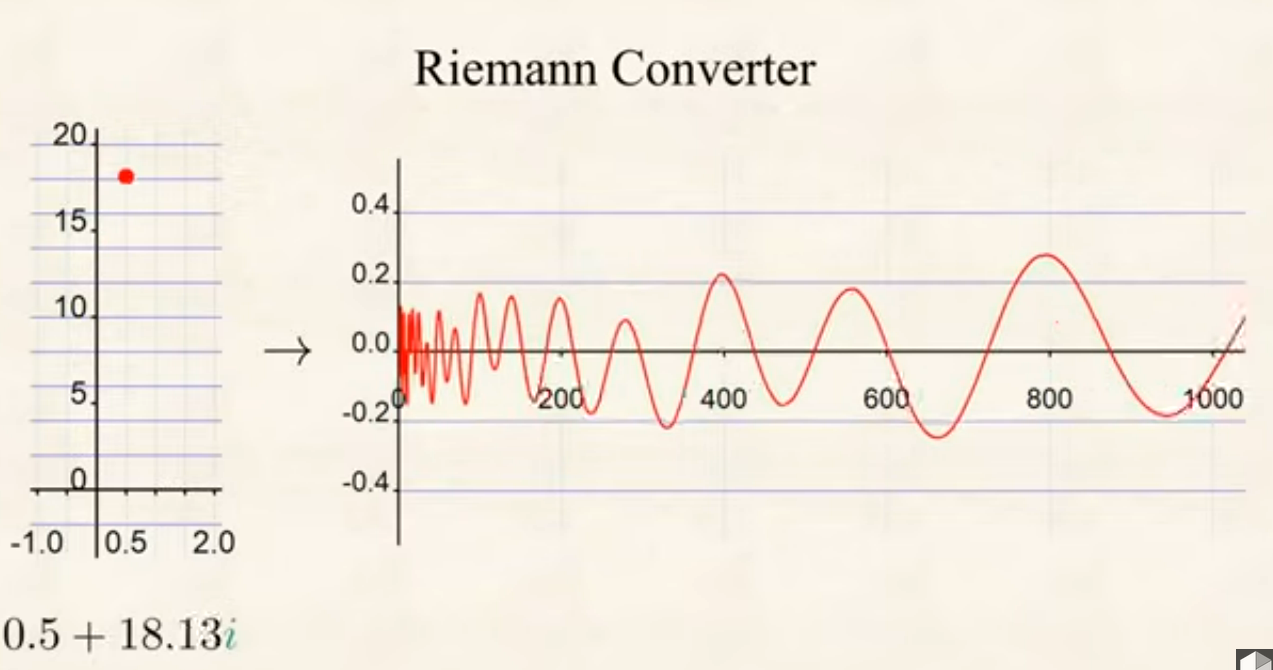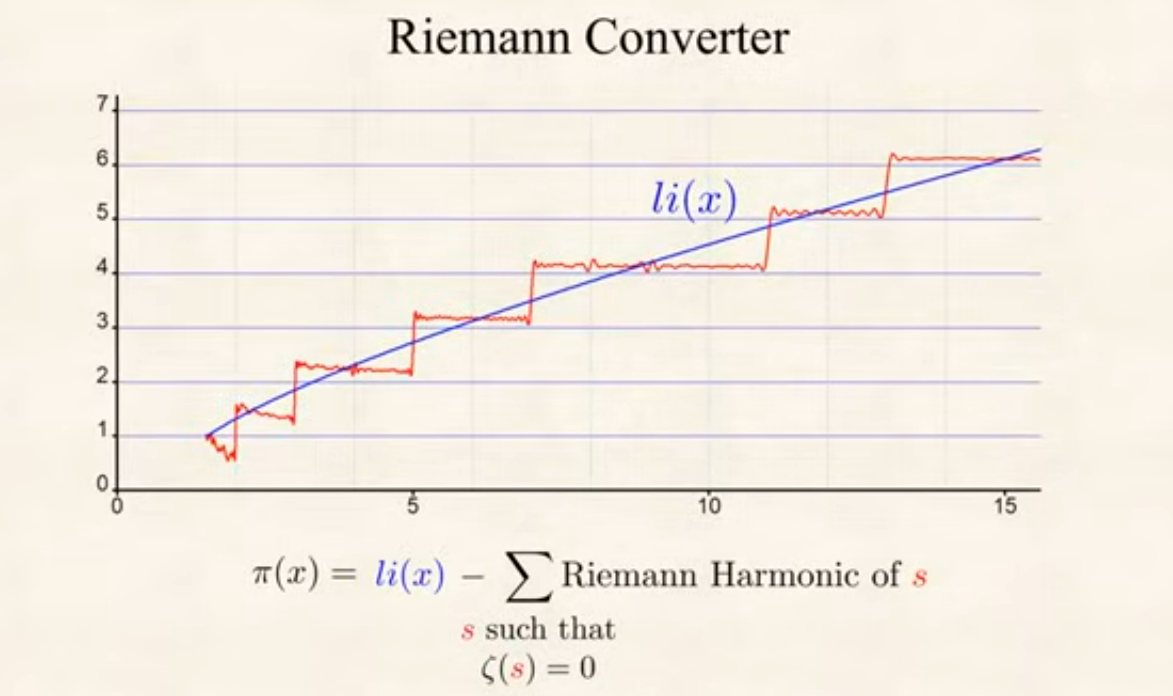The Prime Counting Function
-
Definition: The prime counting function, denoted
, counts the number of prime numbers less than or equal to a given number . -
Examples:
, since the primes are . , since the primes are .
-
Nature:
is a step function — it increases by 1 exactly at each prime number. -
Mathematical Interest: A key goal in analytic number theory is to understand how fast
grows as .
Approximations:
Related:
Dream of a Formula
In this video it is presented the (informal) idea of a Riemann converter or Riemann harmonics:

Each non-trivial zero can be seen as a kind of oscillatory function, in such a way that:

That is, the prime counting function is approximately equal to the logarithmic integral and the correcting terms are given by the Riemann harmonics of the nontrivial zeroes of the Riemann zeta function.
In a more formal approach, there is an “exact” formula, due to Riemann, which expresses
namely
where
- the sum runs over all non‑trivial zeros
of , is the logarithmic integral.
Then one inverts the relation
where
Hence, although there is no elementary “closed‑form” for